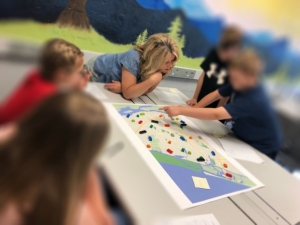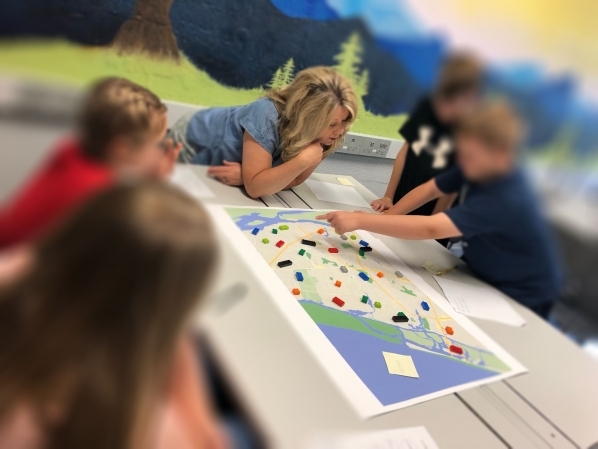Last fall, Appalachian GEAR UP identified ten faculty members from colleges across the region to participate in the inaugural cohort of the Teaching For Community Resilience (TFCR) Fellowship. Over the last few months, participants have been working individually and together to reimagine how public higher education contributes to the resiliency of WNC communities.
This summer, cohort members designed and implemented student experiences in GEAR UP communities, and today we share one of those experiencences with our readers!
Appalachian State University faculty members Dr. Tracy Smith, Dr. Maureen MacNamara, and Dr. Elizabeth Shay created a project that leveraged principles of community resilience from the fields of social work, geography, and community planning. The project engaged students in a discussion of what makes a community resilient and where they might find resources for personal and community well-being.
As part of the project, called Mapping for Resiliency, the team facilitated a 90-minute session that asked students to map what resilience meant to them. The session also used Legos and large-format maps to engage students in the decisions that go into planning resilient-built environments. A GEAR UP partner school, Cane River Middle in Yancey County, hosted the event, and GEAR UP students participated.
The Fellows were assisted by three App State students: Patrick Werner (Geography & Planning), Peyton Jones (Social Work), and Audrey Jones (Curriculum and Instruction). The team aligned the lesson at Cane River Middle with the science and social studies curricula for middle grades and added literacy components such as an article that students could read and annotate based on the community resilience concepts they learned about in the lesson. Although the fellows facilitated the experience in a middle school, they designed the project to be adaptable to students at various educational stages.
Dr. MacNamara adds, “The project also included the use of an ecomap. Ecomaps provide a way for individuals to discover resources in their community. Students created their own ecomaps by thinking about community agencies that they could go to for help. Students then placed the name of these agencies in circles on a sheet and determined how much support they thought they could get from the agency. They used this map to place those agencies on the 3-D maps. This exercise helps students understand that their communities can be important sources of support.”
“It was such a great experience to work with an interdisciplinary team on this project. Each of us faculty had a student working with us, and that was a really rich way for us to deepen our own understanding about community resilience. As a middle grades professor, I also loved having folks from other disciplines to interact with and invest in the lives of young adolescents who are so often stereotyped as egocentric or hormone-driven. They have so much promise and potential! They are our hope for the future, so I am grateful for the investments that we were able to make with this project. I hope the materials will help other teachers and youth advocates to help students map the resources they have personally and in their communities,” says Dr. Smith.
TFCR is a year-long, theoretical and practical investigation of the intersection between public education and community resilience, and in fall 2022, participants will be reflecting on and sharing the outcomes of their pedagogical experiences in a small conference-style presentation among participants and others.
Dr. Tracy Smith leads an activity focused on community resilience at Cane River MS with GEAR UP students
Students decide about the placement of community elements (e.g., housing, schools, commercial buildings, government facilities) and then place color-coded Legos to represent their choices. They noted proximity to roadways, water sources, schools, other buildings, etc. Students then analyzed, explained, and evaluated their decisions.

